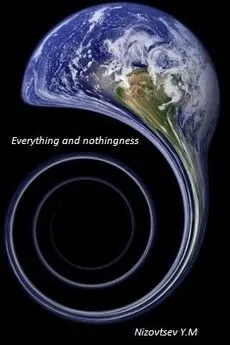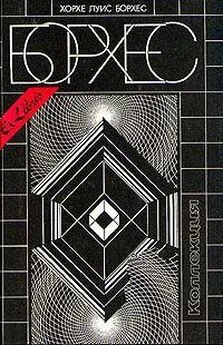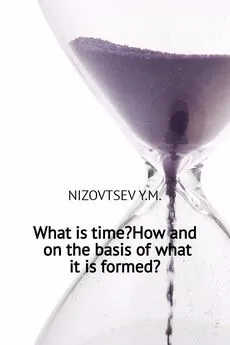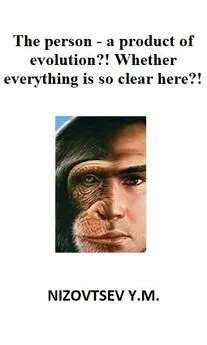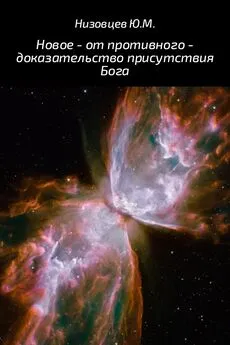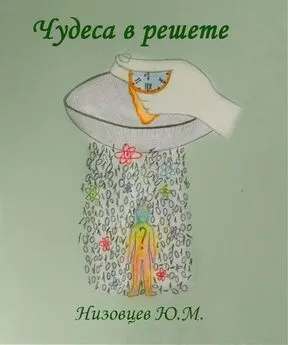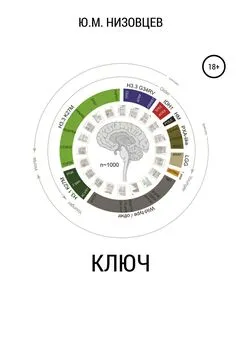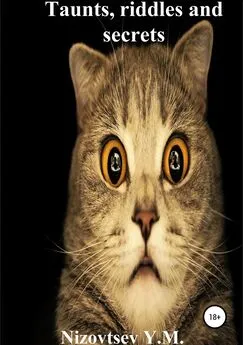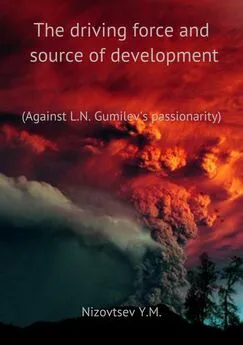Юрий Низовцев - Everything and nothingness
- Название:Everything and nothingness
- Автор:
- Жанр:
- Издательство:Array SelfPub.ru
- Год:неизвестен
- ISBN:нет данных
- Рейтинг:
- Избранное:Добавить в избранное
-
Отзывы:
-
Ваша оценка:
Юрий Низовцев - Everything and nothingness краткое содержание
Everything and nothingness - читать онлайн бесплатно ознакомительный отрывок
Интервал:
Закладка:
Thus, each particle, in this case, from the multitude of individual consciousnesses, is able to communicate instantly with any other particle irrespective of distance, which is absent in the hologram for them, making thereby single consciousnesses, along with that having own lives, dissimilar from lives of someone; limits of these lives are confined to finite existence of their carriers, in particular, by human life, but the number of which is infinite.
These individual consciousnesses, as the parts of the hologram, – too the copies, having single infinite consciousness in the quality of the original, more precisely, any of these particles comprises all single consciousness and vice versa.
The person seems insignificant, surrounded of oceans, mountains, star scatterings. But it is not so.
The person – the most perfect, unique and completed representative of Creation as a whole, because he in own holographic basis combines the simplest frequency spectrum of things, the complex frequency spectrum of the living beings without self-consciousness (only sensing beings) and the most complex spectrum of the self-conscious beings.
At this combination (merge) each person is an image of Uniform, inasmuch he is equipped with everything that is only possible in Creation, – there is no only of eternity of Uniform. Anyway the person is the interaction of the lifeless, thingness components, the consciousness of the lowest level (the level of sensations) and the thinking, projecting, understanding itself consciousness which in its single expression "holds" all beingness in a state of change, updating a projection of Uniform, and consciousness is a key link in dual system of Creation, doing it stable by means of removal from nothingness, into which without consciousness would turn everything.
The active (consciousness) in the person provides for itself the actual, though every time temporary life, which brings into consciousness the changes.
Consciousness in its individual expression, appearing in finite beings over and over again, keeps its active character, its main frequency basis due to actions in the resisting world, which consciousness seeks to change as soon as can, despite all obstacles arising before it.
Consciousness, which is frequency structure in own particles, is subjected to failures in the process of update in a holographic projection. These purely statistical mistakes, happening in superhigh-frequency formations, can change quality of formation and even to destroy it at their accumulation, what happens to the passive (things), resulting things are finite under form; it, apparently, has to dislocate the frequency structure of each individual consciousness, up to his destruction.
However it doesn't happen for the following reason.
If the passive (things) isn't capable (things have not consciousness) to correct happening changes in own basis (the frequency spectrum) and sooner or later it is degraded – any thing, as the passive, has not aspiration to keep anyway its feature which thing is not aware, it has only standard feedback mechanisms preventing its chaotic disintegration – then every living being, and not only a self-conscious being, by all possible ways, which it has enough, clings to life. Thereby consciousness in any living being keeps its main feature – activity, or inescapable aspiration to changes in itself and round itself. However, consciousness in any living being can't influence destruction of thingness components of the body, disintegration of which stops the functioning and existence of this symbiotic formation (concrete living being).
Existence of consciousness into things and among things, as well as near other consciousnesses in the form of the living beings, on the one hand, allows each individual consciousness on reactions to its actions to correct structure of own frequency kernel at means of single consciousness, restoring this kernel, and thereby not to lose own feature – aspiration to changes, i.e. liberty in a varying degree of expression.
In other words, actions of the person, promoting restoration of frequency structure of individual consciousness, allow being eternal to each individual consciousness. Therefore, consciousness cannot be completely separated from the living beings and is compelled for preservation of itself again and again "to plunge" itself into the living beings. This way, i.e. – discretely, the infinite keeps itself, as the active, in the finite temporary world.
On the other hand, similar temporary existence of consciousness in the finite being provides the ability to use changes in itself and round itself, which it is capable to sense and/or understand, anyway, with advantage for itself, but not to the detriment.
As a result, the stay of the active beginning in the person not only gives to the person as to a separate being, conscious life, higher which anything isn't present, but also each individual consciousness has an opportunity in actions of the person to be changed and along with that to keep own kernel from destruction, remaining, unlike things, as the eternal and along with that, possessing individuality inherent only to it.
The consciousness of any living being, and not only person, creates own world, its "now", scanning through sense organs the surrounding, penetrating thereby locally into boundless Uniform.
Naturally, any individual consciousness having a certain level of development, cannot cover by sensations of own body-carrier and by its understanding all infinite Uniform; but it is capable by those means which it has (the person has five sense organs), and by those forms which single consciousness provides to it according to its level of development and type of its carrier, to identify in Uniform the things corresponding to its life cycle, and by consecutive irreversible copying through a pause to form own time which is "transformed" in each individual consciousness due to loss of a pause in it in colourful, moving and changing "now", in which this individual consciousness can exist in the company with other individual consciousnesses among recognizable and copied things, remaining inseparably with own carrier for a certain time in this existence and sensing this existence.
Thus, it is possible to note that according to the offered model of the dual Creation the true is the existence of actual, active infinity (consciousness) and boundless, potentially full by all things, but passive infinity which are merged in timeless and motionless Uniform, and existence them in infinite change discretely in a holographic projection of Uniform, which is "converted" in each individual consciousness into beingness with the moving and changing things.
And can't be differently, inasmuch Uniform and its projection sustain each other in the form of the equilibrium dual system, and they aren't capable to existence in separateness. Their division would mean disappearance of Uniform, so how separately it is net zero or it is nothingness.
Single consciousness finds itself in plurality of particles-copies in the world into time, and thereby the motionless uniform consciousness in Uniform through its projection becomes capable in the form of copies to alter itself through change of own particles-copies providing it by information about own finite lives in the living beings infinitely at a support on things in the form of copies manifested by them from Uniform, which there is everything and nothingness in own infinity, as if enlivening in this process Uniform, full by everything.
Infinite and timeless Uniform, thus, is the merged together the active and the passive; but in own projection it is presented by a multiple steady active, seeking to development, and – the passive, receiving different forms. The passive makes base for this development in infinitely updated by the active a holographic projection.
This duality is the only condition of manifestation Uniform, or – as a result – such duality is the only condition for life and development of consciousness.
It is curious that, represented as "thing in itself" the timeless, infinite Uniform, is being "unpacked" by sense organs of the person every instant – just look around, – thereby Uniform gives the opportunity to human consciousness to recognize his existence without belief in something fantastic, all-powerful and external.
Each person understands own spiritual essence, i.e. – understands that he is not a thing, that he can do a lot of things on own understanding, but when everything goes well in his life, the person, as a rule, doesn't think about virtual subjects.
However at these or those failures, as well as at the end of life, he willy-nilly looks for support, understanding own powerlessness, and often – and a vanity of hopes, one prays, another person meditates – and he can be addressed to God, an idol, etc.; but any person is addressed in fact, without noticing that, to own essence – to own consciousness: and this address is equivalent to the appeal to single consciousness.
In reply he receives that looks for: either hope, or confidence, or if everything is very bad, – consolation.
The person as image of Uniform, creates own "now", naturally, with assistance of Uniform which can't but respond on him.
Literature
1. Lenin V. I. Materialism and Empirio-Criticism. Collected Works. Progress Publishers, 1972. Moscow. V.14. [Electronic resource]. Access mode: Marxists.org>archive/Lenin… 1908/mec…
2. Nietzsche F. On Truth and Lies in extra moral sense. [Electronic resource]. Access mode: Nietzsche.ru/works/other/about-istina/
3. Avenarius R. Philosophie als Denken der Welt gemass dem Princip des kleisten Kraftmasses. Leipzig. Reisland. 1876.
4. Heidegger M. Being and Time. UK. This translation copyright © Blackwell Publisher Ltd. 1962. 0-631-19770-2 (pbk)
5. Husserl E. Logical investigations. V. 1. Prolegomena to pure logic. This paperback edition first published 2001 by Routledge. ISBN: 978-0-415-24189-8
6. Peirce. C. S. The Fixation of Belief. The Writings. Volumes I – VI. Vol. III. Indiana University. [Electronic resource]. Access mode: www.iupui.edu/-arisbe/menu/…/bycsp.HTM
7. Peirce C. S. What pragmatism is. The Essential Peirce 1 – 2. Vol. II. [Electronic resource]. Access mode: www.iupui.edu/-arisbe/menu/…/bycsp.HTM
8. Hobbes T. Leviathan. The English Works of Thomas Hobbes of Malmesbury; New First Collected end Edited by Sir William Molesworth, Bart., (London; Bohn, 1839-45). 11 vols. Vol. 3. 12.09.2015. [Electronic resource]. Access mode:
9. Berkeley G. A Treatise Concerning the Principles of Human Knowledge. Edited by D.R. Wilkins. Dublin. Reissue 1734. [Electronic resource]. Access mode: www.math.tcd.ie/…/Berkeley/HumanKnowled
10. Husserl E. Ideas Pertaining to a Pure Phenomenology and to a Phenomenological Philosophy – First Book General Introduction to a Pure Phenomenology. Collected Works. Vol. II, 1976 [1913]. Kersten F., trans. The Hague. Nijhoff. [Electronic resource]. Access mode: www.dhspriory.org/kenni/…/Husserl/Ideas1.pd…
11. Hume D. Philosophical Essays Concerning Human Understanding. London. The copytext is the 1777 edition. [Electronic resource]. Access mode: www.david hume.org/
12. Avenarius R. Der menschliche Weltbegriff. Leipzig. Reisland. 1891.
13. Hegel G. Works of Hegel, Volumes: 13. Vol. I. [Electronic resource]. Access mode: http/www.logos.com/
14. Reale G., Antiseri D. Western philosophy from the origin to the present days. Vol. 1. Saint-Petersburg. “D. Petropolis”. 1994.
15. Mach E. Die Mechanik in ihrer Entwicklung historisch-kritisch dargestellt. 3. Auflage, Leipz., 1897, s. 473.
16. Nizovtsev Y. M. Our true life is endless. ISBN. 9781310367274. Smashwords Edition, 2014 © by Yury Nizovtsev.
Читать дальшеИнтервал:
Закладка:
